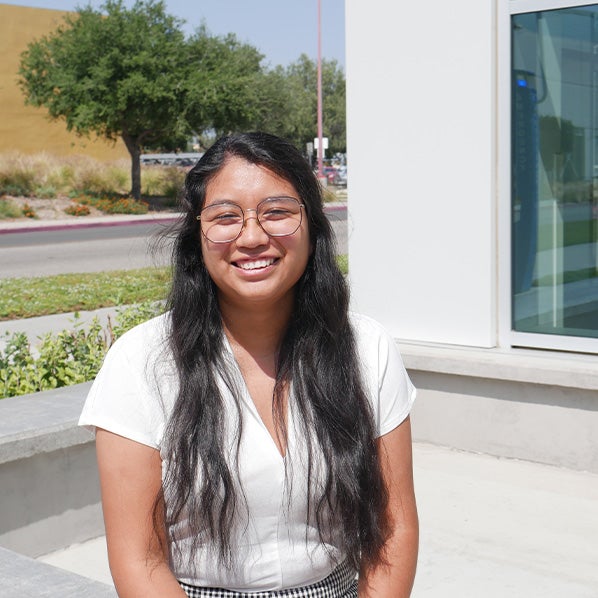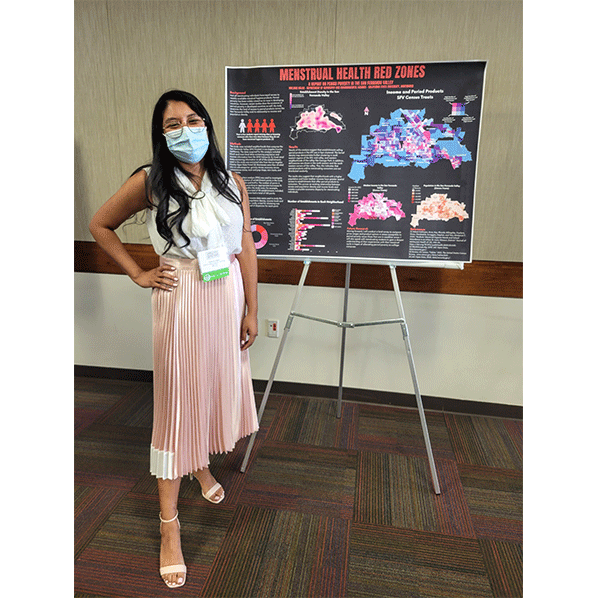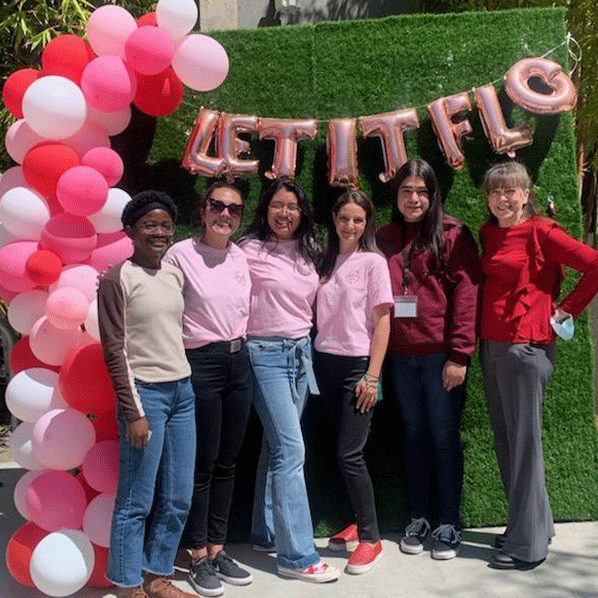June 5, 2022
The meaning behind the map: Melanie Mejia’s journey to research
When Melanie Mejia first took a seminar in geography during her undergrad under Dr. Steven Graves, her journey into data science began.
“It blew my mind away. He did a quick demonstration on how to use Geographic Information Systems (GIS) in forensic geography,” Mejia said. “I loved it ever since.”
This began Mejia’s foray into geography. After taking more geography classes as an undergrad, she asked Dr. Graves for a recommendation letter into the GIS graduate program.
“It was really just seeing the applications of GIS because data science is cool,” Mejia said. “With GIS you can actually make maps and show people [what is going on] through pictures.”
As a GIS graduate student and a former HERE Center intern, Mejia’s goal is to work somewhere she can use her research and advocate for disparaged communities. In light of this goal, her research projects have centered on health disparities.


In her undergrad, she used GIS to examine health disparities in the San Fernando Valley—specifically cardiovascular rates, obesity rates, and fitness rates to really be able to measure how healthy a person can be in a neighborhood compared to the other neighborhoods in the San Fernando Valley.
“As a master’s student, I worked a little bit looking at infant and mother mortality rates in LA County, specifically service planning area 5 (SPA 5),” Mejia said. “I also did a little bit of looking at racial breastfeeding disparities.”
Mejia’s thesis comprised the majority of her research.
Her thesis looked at the distribution of period products across the San Fernando Valley and how it impacts CSUN students.
“Geographically, my hypothesis was that [the stores] were going to be clustered, and they just happened to be clustered. As for the population survey, I hypothesized that groups of people of color were going to face more period poverty more than their white colleagues.”
Mejia wanted to look at the ages and locations of the people within the areas. She wanted to investigate whether or not people from certain locations were more susceptible to facing period poverty than other areas.
“I made a hotpot map of where most of the stores are in the Valley that sell period products and they just so happen to be clustered in heavily populated areas,” Mejia said. “And those areas happen to be [low-income areas.]”
Mejia is also Chair of Personnel at Associated Students (AS), and one of the projects they worked on was C.R.A.M.P.S. Week, or College Resources of All Menstruating Persons and Students.




During her time at AS, Mejia’s goal was to normalize menstruation and help menstruating students make sure they had all the resources that they need to be successful in their academic career. She, and her cohort at AS, aimed to include sustainable [menstrual products] at the Klotz Center that would be available for any student who requests them at no cost.
“We were able to get an initiative out from the Associated Students Senate, which requires period products in all bathrooms across campus include, and we wanted to also include men's bathrooms specifically,” Mejia said.

For future HERE Center interns, Mejia advised that students enjoy what they do above all else.
“First and foremost, [you have to] like what you're studying and what you're doing because of all the amount of time and effort you're going to be putting into this—it has to matter,” Mejia said.

